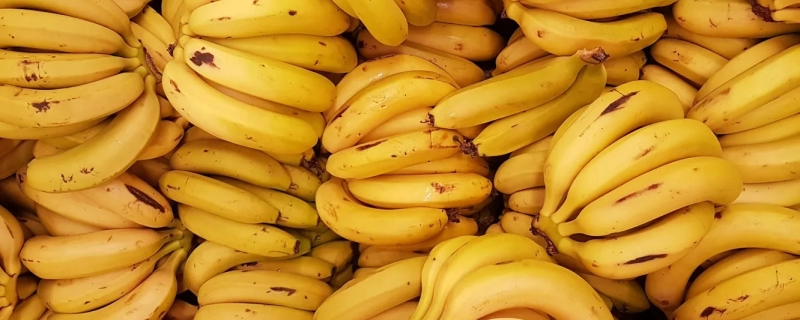Category: Fruits and Berries
Banana: Taste, Uses, and Benefits
Bananas are among the world’s most popular fruits, known for their natural sweetness, soft texture, and versatility. Originally from Southeast Asia, bananas have become a staple in diets worldwide, appreciated for their energizing properties and rich nutritional content. With a flavor that ranges from mildly sweet when green to rich and creamy when ripe, bananas are as versatile as they are nutritious. This article covers the flavor characteristics of bananas, their culinary uses, health benefits, and storage tips.
What does Banana taste like?
Primary Flavor Characteristics
Bananas are characterized by their natural sweetness, which intensifies as they ripen. Green bananas are firmer with a mild, starchy taste, while fully ripe bananas develop a creamy texture with a rich, sugary flavor and subtle hints of vanilla.
Aromatic and Taste Nuances
Bananas have a mild, fruity aroma that grows more pronounced with ripening. The sweet scent, combined with the soft, creamy texture, makes bananas perfect for both eating fresh and using in desserts, smoothies, and baked goods.
Scientific Description of Taste and Aroma
- Aroma: Sweet and fruity, with a hint of vanilla.
- Taste: Naturally sweet, with variations depending on ripeness.
- Texture: Smooth, creamy, and slightly fibrous.

In-Depth Flavor Analysis of Banana
Underlying Flavor Notes
Bananas have a complex flavor profile that evolves as they ripen:
- Natural Sweetness: Ripe bananas are high in natural sugars, providing a rich, satisfying sweetness.
- Vanilla Notes: Subtle hints of vanilla add depth, especially in very ripe bananas.
- Mild Starchiness: Green bananas have a slight starchy taste, making them useful in savory dishes.
Impact of Ripeness on Flavor
- Green Bananas: Mild, starchy taste; firmer texture ideal for cooking.
- Fully Ripe Bananas: Sweet, creamy, with hints of vanilla; ideal for fresh eating and baking.
- Over-ripe Bananas: Intensely sweet, soft, and ideal for baking, smoothies, or purees.
Textural Qualities
Bananas have a smooth, creamy texture that becomes softer as they ripen. This makes them versatile for a variety of culinary uses, from blending into smoothies to mashing into baked goods.
Culinary Uses of Banana
Primary Uses
- Fresh Consumption: Bananas are widely enjoyed fresh as a convenient, portable snack.
- Smoothies and Juices: Bananas add creaminess and natural sweetness to smoothies and shakes.
- Baked Goods: Bananas are often used in breads, muffins, and pancakes, providing moisture and sweetness.
- Desserts: They’re popular in puddings, ice creams, and pies, adding flavor and texture.
- Savory Dishes: Green bananas are used in savory dishes like curries and stews, adding a mild starchiness.
Ideal Pairings for Banana
- Spices: Cinnamon, nutmeg, and vanilla enhance banana’s natural sweetness in desserts and baked goods.
- Nuts: Almonds, walnuts, and pecans provide a crunchy contrast to banana’s softness.
- Chocolate: The richness of chocolate pairs excellently with banana in smoothies and desserts.
- Citrus Fruits: Lemon and lime add brightness and balance banana’s sweetness in fruit salads and desserts.
- Yogurt and Cream: Creamy dairy products complement banana’s texture, creating rich, satisfying combinations in smoothies and parfaits.
Health Benefits of Banana
Key Nutrients and Benefits
- Potassium: Bananas are high in potassium, supporting heart health and blood pressure regulation.
- Vitamin B6: This vitamin in bananas aids metabolism and promotes brain health.
- Fiber: Bananas contain dietary fiber, supporting digestion and helping to regulate blood sugar.
- Vitamin C: Provides antioxidant protection and supports immune health.
- Low Calorie: Bananas are a nutritious, low-calorie option for energy and satiety.
Potential Precautions
- High Natural Sugars: While healthy, bananas contain natural sugars, so moderation is recommended for those monitoring blood sugar.
- Ripeness Sensitivity: Some people may experience digestive discomfort from very ripe bananas, as they are higher in natural sugars.

Tips for Choosing and Storing Bananas
How to Choose Quality Bananas
- Color and Firmness: Select bananas with bright yellow skin for ripeness; green bananas can be ripened at home.
- Spots: Brown spots indicate sweetness, while overly soft bananas are best for cooking or baking.
Storage Recommendations
- At Room Temperature: Store bananas at room temperature to allow for natural ripening.
- In the Refrigerator: Once ripe, bananas can be refrigerated to slow further ripening, although their skin may darken.
- Freezing: Peeled bananas can be frozen for later use in smoothies or baking, retaining their flavor and nutritional value.
Fun Facts About Banana
- Botanical Berry: Bananas are technically a type of berry, belonging to the Musa genus.
- Globally Popular: Bananas are one of the world’s most widely consumed fruits and are cultivated in over 135 countries.
- Natural Sports Fuel: Due to their high potassium and carbohydrate content, bananas are often used as a quick energy source for athletes.
Resources
Books and Publications for Further Reading:
-
"The Banana: Empires, Trade Wars, and Globalization" by James Wiley
– Explores the cultural and economic significance of bananas throughout history. -
"On Food and Cooking: The Science and Lore of the Kitchen" by Harold McGee
– Discusses the chemical composition and ripening process of bananas in detail. -
"The Flavor Thesaurus" by Niki Segnit
– A guide to flavor pairings, with insights into bananas' versatility in cooking. -
"Bananas: An American History" by Virginia Scott Jenkins
– A detailed history of bananas' rise to global prominence.